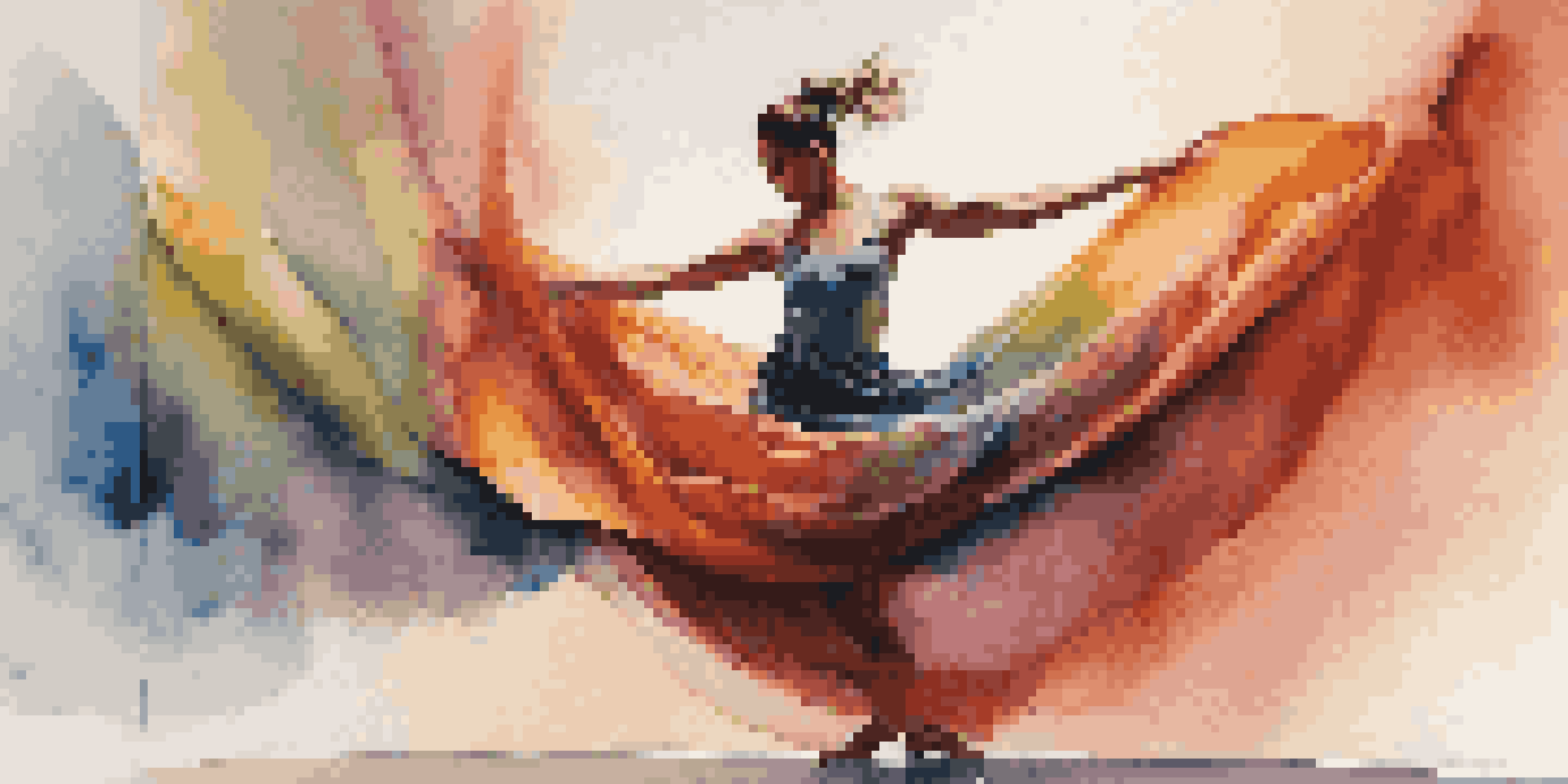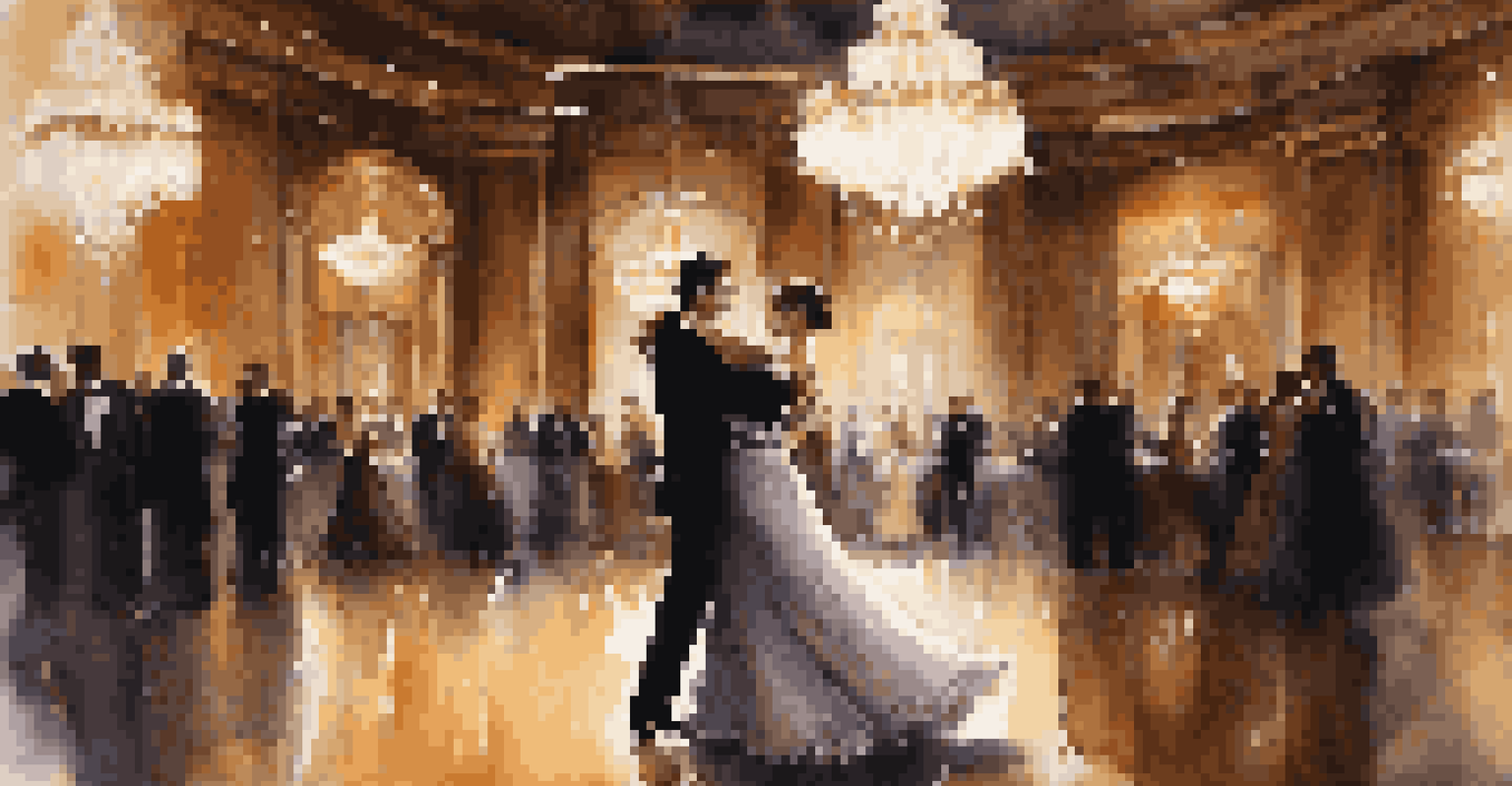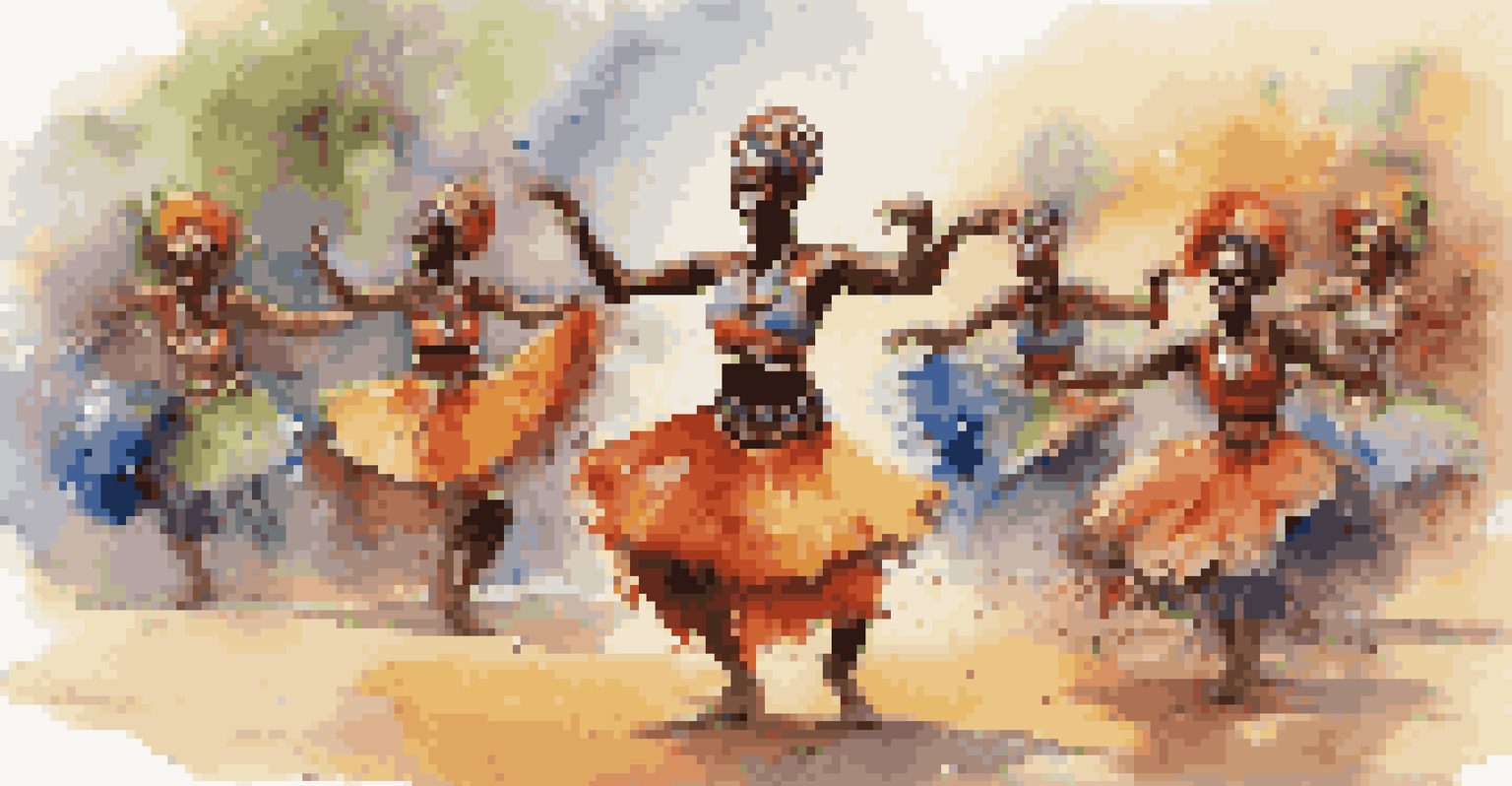Body Language in Dance: Understanding Nonverbal Emotional Cues

The Significance of Body Language in Dance
Body language is a fundamental aspect of communication in dance, transcending spoken words. Dancers use their movements to express emotions, tell stories, and connect with their audience on a deeper level. This nonverbal form of communication can often convey feelings more powerfully than dialogue or lyrics.
Dance is the hidden language of the soul.
For instance, a dancer's posture can indicate confidence or vulnerability, while the speed and fluidity of their movements can express joy or sorrow. This rich tapestry of physical expressions allows the audience to feel the dancer's emotions intimately. Understanding these cues can enhance our appreciation of the art form.
Moreover, recognizing body language in dance can also foster empathy and connection among viewers. When we see a dancer pour their heart into a performance, we may find ourselves resonating with those emotions, creating a shared experience that is both personal and communal.
Key Nonverbal Cues in Dance Performance
Dancers utilize various nonverbal cues to express their emotions, including facial expressions, gestures, and overall body movement. A simple smile can convey happiness, while a furrowed brow can suggest tension or sadness. These subtle signals help to communicate the dancer's emotional state without the need for words.

Additionally, the use of space and proximity plays a crucial role in conveying feelings. For example, moving closer to another dancer can indicate intimacy or connection, while distancing can suggest conflict or isolation. These spatial dynamics enrich the storytelling aspect of dance.
Body Language Transcends Words
Dancers use movements to express emotions and connect with their audience on a profound level.
Furthermore, the dynamics of movement—such as sharp, angular gestures versus soft, flowing motions—can also reflect emotional intensity. Understanding these cues helps the audience engage more deeply with the performance, as they become attuned to the emotional landscape being portrayed.
Cultural Influences on Dance Body Language
Different cultures have unique ways of expressing emotions through dance, which can influence body language significantly. For instance, traditional African dances often incorporate vibrant and energetic movements to express joy and celebration. In contrast, ballet may emphasize grace and poise to convey a sense of elegance and beauty.
The body says what words cannot.
These cultural distinctions shape how movements are perceived and understood. A gesture that signifies one emotion in one culture might communicate something entirely different in another. This diversity adds richness to the world of dance and highlights the importance of context.
As dancers travel and collaborate across cultures, they often blend these influences, creating new forms of expression. This fusion not only broadens their repertoire but also deepens their connection with audiences from diverse backgrounds.
Interpreting Emotional Cues Through Dance Styles
Different dance styles carry distinct emotional cues, each telling a unique story through movement. For example, contemporary dance often embraces raw, expressive movements that can evoke a wide range of feelings, from anguish to elation. In contrast, ballroom dance typically exudes elegance and precision, often reflecting romance and partnership.
Understanding these stylistic differences can enhance our ability to interpret the emotions conveyed during a performance. Observing the way dancers embody their characters through specific movements helps us appreciate the narrative being presented. Each style serves as a lens through which we can view emotional experiences.
Cultural Influences Shape Movement
Different cultures impart unique emotional expressions in dance, creating a rich tapestry of body language.
Moreover, many choreographers intentionally choose styles that align with the emotional themes they wish to explore. This synergy between movement and emotion makes each performance a multifaceted experience, inviting the audience to engage both intellectually and emotionally.
The Role of Music in Enhancing Body Language
Music plays a pivotal role in shaping the emotional landscape of dance performances. The rhythm, tempo, and melody can greatly influence how a dancer interprets and expresses emotions through their movements. A fast-paced beat may prompt energetic and lively choreography, while a slow, melodic tune may inspire graceful and fluid motions.
Moreover, the synergy between music and dance can amplify the emotional impact of a performance. When a dancer's body language aligns with the musical composition, it creates a powerful connection that resonates deeply with the audience. This harmony allows viewers to feel the emotions conveyed even more profoundly.
Additionally, dancers often rely on musical cues to guide their expressions and transitions. Understanding how to interpret and respond to the music can elevate a dancer's performance, enhancing their ability to convey complex emotions through body language.
Creating Connection Through Nonverbal Communication
Nonverbal communication is key to creating connection between dancers and their audience. When a performer authentically expresses emotion through their body language, it invites the audience to share in that experience. This connection can transform a dance performance into a powerful emotional journey.
For instance, a dancer who fully embodies their character and emotional state can evoke empathy and understanding in viewers. This shared emotional experience fosters a sense of community, as audiences collectively respond to the performance. It's this connection that often leaves a lasting impact long after the curtain falls.
Music Amplifies Emotional Impact
The synergy between music and dance enhances the emotional resonance of a performance, deepening audience engagement.
Moreover, dancers often build connections with one another through nonverbal cues during performances. This interplay of body language allows them to synchronize their movements and emotions, leading to a more cohesive and engaging performance.
Practical Tips for Dancers to Enhance Body Language
Dancers can enhance their body language by paying attention to their posture and alignment. Good posture not only improves movement quality but also conveys confidence and presence. Regular practice in front of mirrors can help dancers become more aware of how their body language communicates emotions.
Additionally, experimenting with different styles and techniques can broaden a dancer's expressive range. Trying various forms of dance allows dancers to explore new ways of embodying emotions, enriching their overall performance. Workshops and classes focused on emotional expression can also be beneficial.

Finally, mindfulness practices can help dancers connect with their emotions more deeply. By being present and aware of their feelings, dancers can translate those emotions into their movements, creating a more authentic and impactful performance.